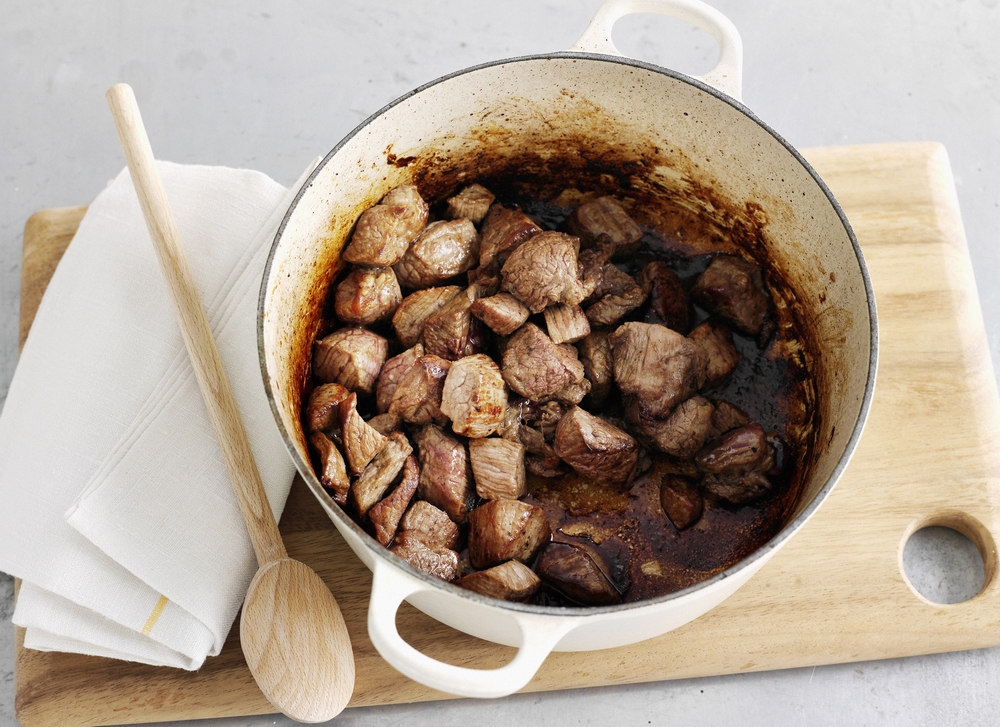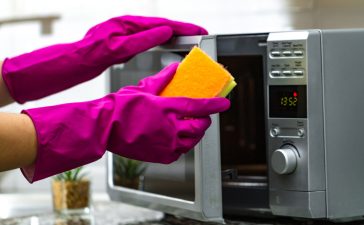A Dutch oven is one of the most versatile pieces of cookware available. It can be used on the stovetop for making soups and stews or in the oven for roasting chicken or baking bread. Dutch ovens come in various materials, including plain or enameled cast iron, stainless steel, aluminum, and ceramic stoneware. While each type has its own advantages and disadvantages, they all share a common need: proper cleaning after every use to ensure their longevity.
To assist you in maintaining your Dutch oven in excellent condition, we’re providing the best cleaning tips for each type, using supplies you likely already have at home. Discover how to clean your Dutch oven below.

What You’ll Need
Equipment / Tools
Cast Iron Dutch Oven
- 1 Non-abrasive plastic scraper
- 1 Non-abrasive sponge
- 1 Microfiber towel
Enamel-Coated Dutch Oven
- Non-abrasive plastic scraper
- Non-abrasive sponge
- Microfiber towel
Stainless Steel/Aluminum Dutch Oven
- Microfiber towel
Stoneware Dutch Oven
- Non-abrasive sponge
Materials
Cast Iron Dutch Oven
- 1 bottle Dishwashing liquid
- 1 roll Paper towels
- 1 bottle Vegetable oil
Enamel-Coated Dutch Oven
- Dishwashing liquid
- Baking soda, Bar Keepers Friend, or Bon Ami
Stainless Steel/Aluminum Dutch Oven
- Dishwashing liquid
- Baking soda
Stoneware Dutch Oven
- Dishwashing liquid
- Baking soda
Instructions
How to Clean a Cast Iron Dutch Oven
Wiping Away Food Residue
- Allow the cast iron lid and base to cool down to a safe handling temperature.
- Use a dry paper towel to remove any food residue from both the interior and exterior surfaces.
- Dampen a sponge and apply a few drops of dishwashing liquid. Use it to wipe down the Dutch oven once more. For any stubborn, stuck-on food particles, you can utilize a plastic scraper to loosen them.
Rinsing, Drying, and Re-seasoning
- Rinse the Dutch oven under hot water and promptly dry it using a microfiber towel to prevent the formation of rust.
- To re-season, apply approximately 1/2 teaspoon of vegetable oil onto a paper towel and use it to evenly coat both the interior and exterior surfaces of the oven.
- Heat the Dutch oven either on a stovetop set to medium-low or in an oven preheated to 250 to 300 degrees Fahrenheit for five to 10 minutes.
- Allow the Dutch oven to cool completely before storing it.
How to Clean an Enamel-Coated Dutch Oven
Use Warm, Soapy Water and a Gentle Abrasive
Allow the Dutch oven to cool down, and then utilize a plastic scraper to eliminate any food residue. Wash both the interior and exterior of the oven and its lid using dishwashing liquid, warm water, and a non-abrasive sponge. If stubborn, stuck-on food remains, you can employ baking soda, Bar Keepers Friend, or Bon Ami as a gentle abrasive by sprinkling it on a sponge to help remove the food.
Rinse and Dry
Rinse the Dutch oven with warm water and dry with a microfiber towel.
How to Clean a Stainless Steel or Aluminum Dutch Oven
Wash, Rinse, and Dry
- Allow the Dutch oven to cool to the touch.
- Wash in a sink of hot, soapy water.
- Rinse well and dry immediately to prevent water spots.
Remove Stuck-On Food
-
- If you have stuck-on food, pour four cups of water into the Dutch oven. Add 1/4 cup of baking soda.
- Bring the mixture to a simmer on the stovetop and boil for one minute.
- Cover the Dutch oven and allow to cool to the touch.
- Wash as usual.
How to Clean a Stoneware Dutch Oven
Cool Before You Clean
Ceramic stoneware Dutch ovens are susceptible to damage from rapid temperature changes and can break. Avoid filling a hot Dutch oven with cold water for soaking purposes.
Allow the Dutch oven to cool down, and then proceed to wash it in warm, soapy water.
For removing stubborn, baked-on food, soak the Dutch oven in soapy water. You can sprinkle baking soda on a non-abrasive sponge to assist in lifting hard-to-remove residue.
Tips for Cleaning Dutch Ovens
Avoid using metal scrapers, steel wool scrubbing pads, or any cooking utensils that may scratch the surfaces of all types of Dutch ovens.
Always ensure that Dutch ovens have cooled down before filling them with water or submerging them in a sink full of water.
While certain Dutch oven brands may claim to be dishwasher-safe, it’s gentler and better for longevity to hand-wash them.
Steer clear of citrus-based cleaners, as they can dull the glossy exterior finish of ceramic stoneware Dutch ovens.
Note: Most enameled Dutch ovens feature a white interior that may become discolored or stained after numerous uses. Stains from tomato sauces and pot roasts, for example, are challenging to remove. However, these stains will not impact the non-stick quality of the surface or the flavors of the food prepared in the Dutch oven.
You Might Also Like
How to Clean a Velvet Couch—Because the Glamour Upholstery Can Get Dirty
A velvet couch exudes luxury and introduces a touch of sophistication and rich color to any living space. While it...
If Your Home Smells Off, Look Into These 8 Problem Areas
You know that fresh, citrus-infused aroma that welcomes you when you step into the luxurious lobby of a high-end hotel?...
Step-by-Step Instructions for Using a Steam Cleaner
If you're searching for a potent and efficient method to perform a thorough cleaning of various surfaces within your home,...
Experts Reveal How to Clean a Microwave Easily
Knowing how to clean a microwave is an essential task. When done correctly, it helps prevent unpleasant odors and the...











